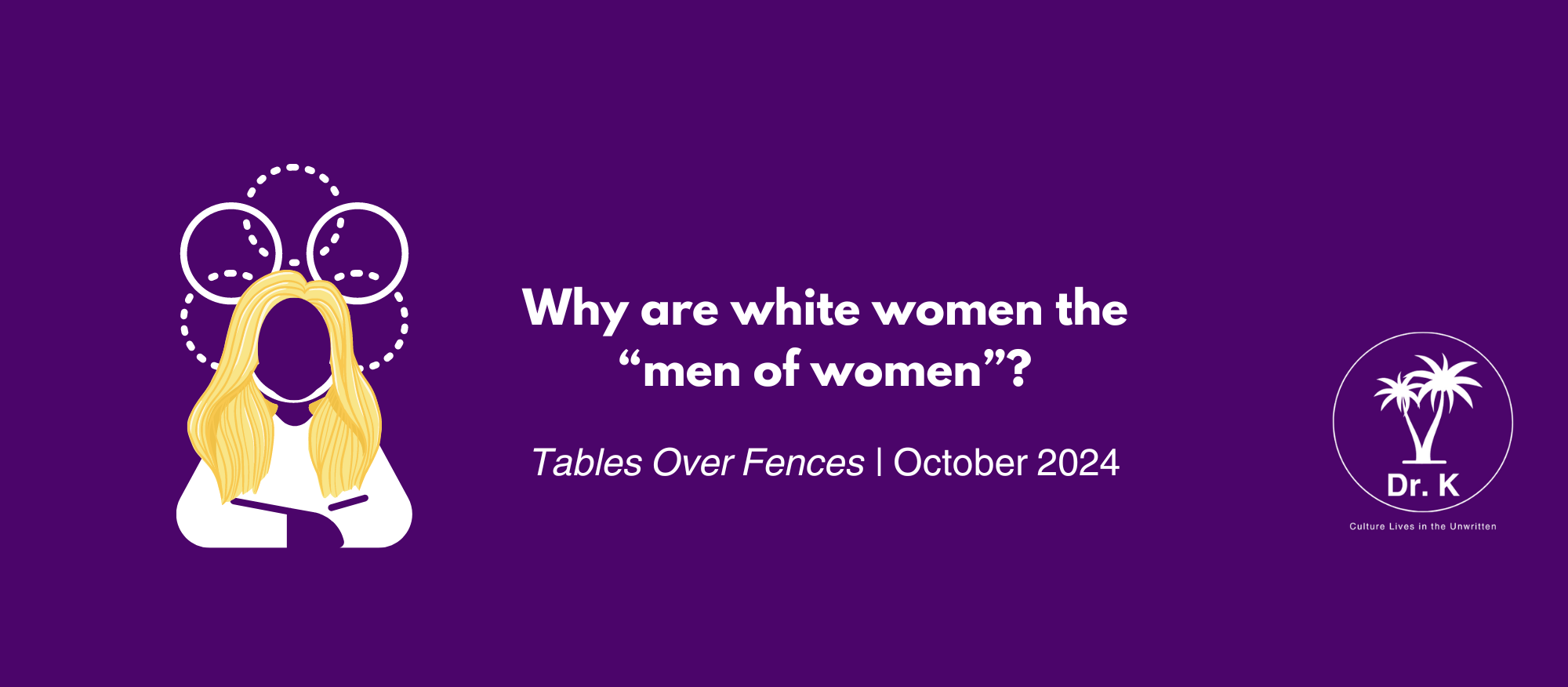Culture is Not an Iceberg
1 year ago

The most salient memory I have of this is working somewhere that claimed to have a culture of learning…but any time I spent in training and learning was not factored into my performance appraisal. They were just not billable hours. So…how was this a culture of learning? Or was it all just marketing?
I have noticed confusion over this term across levels of organizations. For instance, I opened a training on cultural intelligence by asking the question, “What is culture?” and was met with crickets. For the frequency that this term is used, I fear it has become more of a corporate buzzword (thrown in there with “impact” and “synergy”) than a true understanding of the word. Unfortunately, when words are used so habitually, employees can be hesitant to ask what they mean out of fear of looking stupid. Y’all aren’t stupid. There’s a true lack of understanding here.
Repeatedly, I’ve seen graphics similar to the one below, arguing that culture is an iceberg. The analogy is intended to point out that much of culture is not apparent and requires a deeper depth of understanding.
I can understand and appreciate the intent of this analogy…but it can also be misleading. The issue I have with the iceberg analogy is it describes culture as something separate from us that cannot be changed without melting it. It’s cold, distant, imposing, and something we should avoid running into. That isn’t true.
Culture isn’t the iceberg. It’s the water.
Culture is what is so normalized around us that we do not even notice it. I LOVE analogies, but I like going with David Foster Wallace’s story here:
“There are these two young fish swimming along and they happen to meet an older fish swimming the other way, who nods at them and says “Morning, boys. How’s the water?” And the two young fish swim on for a bit, and then eventually one of them looks over at the other and goes “What the hell is water?”
Only since hearing this story have I ever thought about how I am surrounded by molecules of air. Just as a fish doesn’t think of water (I assume, I’ve never successfully talked to a fish), and we don’t think of pushing through air, we often do not recognize our own cultures when we are in them. We don’t think of them because we perceive them as normal.
Like all behaviors, culture is a combination of individual and environmental factors. Humans can shape their environment, as well as be influenced by their environment. Individualistic cultures, such as the ones in the U.S., are resistant to that last idea. We perceive ourselves to have high levels of agency, uninfluenced by others and our environment. But that is not true.
Think of it this way…does anyone have to tell you not to wear your swimsuit to the office? I lived in Florida for 25 years, and even I never saw anybody show up to work in a bikini or swimming trunks. And of all of the beaches that I have paced, splashed, and built sand castles on…nobody had to tell me not to wear close-toed shoes and comb my hair. Why? Because the cultural rules told me that I, as an individual, still had to change my behavior in different environments.
Now, when I finished my first El Camino de Santiago in Spain and walked into Finisterre to find both men and women on the beach topless…my American self was startled. Because in my culture, women aren’t allowed to be topless. But to the Spanish, they didn’t bat an eye. “We all have bodies,” they’d say.
I mean, they’re not wrong. But it wasn’t culturally “normal” to me.
Now imagine, somebody at the beach entrancing announcing loudly to tourists that this beach has only the best, designer swimwear while you’re sitting there in your sister’s hand-me-down bikini from Walmart. No judgment, I’m all about recycling! But…it would seem ludicrous right? Because it’s not what is actually happening on the beach. Saying one thing about the environment, and experiencing another, is impossible to hide.
On the other hand, we also shape our cultures. With dress codes in mind, let’s remember that not too long ago, in the U.S. women were not allowed to (or very stigmatized for) wear(ing) pants. The culture norms said men wear pants and women wear dresses/skirts. However, enough people resisted over time that it has now become normalized for everyone to wear pants (most women also weren’t allowed to work for pay, but…much has been written on that already). This is an example of how individuals collectively changed the environment.
So where am I going with this? To summarize:
- Our own cultures are difficult to notice because we perceive them as normal.
- Culture cannot be determined by a sign on the doorway. It is determined by the attitudes, behaviors, and values that are deemed acceptable, rewarded, and normalized.
- Cultures that are foreign to us can make us feel like a fish out of water. Nobody wants to swim in rough water all of the time.
- Fortunately, culture is malleable.
We need to accurately identify our cultures at work. Doing so allows us to:
- Articulate clear expectations to employees.
- Attract and retain employees who will thrive in our water.
- Demonstrate our value to our clients.
- Identify where we are vs. where we want to be as a culture, and then develop a strategy to get there.

So how do we identify our own culture(s), if it’s so hard for us to see? By remembering W.A.T.E.R.
WATER
W = What’s your culture?
A = Assume less
T = Tales of Legend
E = Earn trust
R = Recognize Rewards
W = What’s your culture?
To understand how we interact with other cultures, we have to understand our own. I encourage you to start (but not end) with the following questions:
- What values, and beliefs do you hold?
- What do you consider “good” behavior and “bad” behavior?
- When you have received backlash for behaviors you thought were acceptable? Where were you and who were you with?
- What spaces are you most comfortable in? Who is with you? How are these folks and this environment similar to you? If you were bringing a mentee into this environment, what guidance would you provide them before walking into the door?
A = Assess Don’t Assume
As a manager, I’ve had many times where I’ve received a product from my staff and thought “Ugh, this isn’t what I asked for.” But….was it? Did I tell my employees my expectations, or did I feel like they “should” have known something? Oftentimes, when we think someone “should” have known something, we are assuming others have the same cultural framework we do. In my work, I see this most often about language — how something was written (tone, fonts, length, etc.).
T = Tales of Legend
One way to identify cultural values is to listen to the stories that they tell. When I was a child, I used to always hear, “If you put a frog in a pot of boiling water it’ll jump out. But if you put it in lukewarm water and slowly turn up the heat, it’ll boil alive.” What is the message of that story? Be careful of the small injustices you tolerate. They escalate.
Ask:
- What are the stories and messages told in your organization?
- What’s the founding story?
- When executives and other leaders represent your company, what stories are they telling to portray it?
- What is the story you want your team to be able to tell?
E = Earn trust
Consider your team your subculture. To hear others’ stories, we have to earn their trust, particularly if their stories are different from, or conflict with, the organization’s story. I do not mean building trust to deceive. I mean genuinely creating a safe space where people know they can tell their stories. Hearing the stories of your team will help you identify ways that you can weave their culture into your work. This will not just make the team more inclusive, it will also make the work better. Innovation does not come out of only one culture. It comes out of the tapestries we weave together.
To start hearing other stories, see if your organization’s affinity groups and/or employee resource groups (ERGs) have already shared anything.
- What stories are they telling?
- What activities do they host?
- What can you already learn from the people who have already bravely stepped forward?
R = Recognize Rewards
I started my first culture post with the table about the organization I worked for that claimed to have a learning culture…but didn’t include my learning in any of the performance evaluations. What your organization truly values, whether they say it or not, is the behavior they reward. Period.
Similarly, what you truly value as a manager, is the behavior you reward. After a particularly harrowing work environment, I started announcing a no-bullying policy for my immediate supervisees. I advocate for an anti-bullying policy to my executives, but whether they implement it or not, my team knows I will not reward backstabbing behaviors on my team. I praise my staff who support each other and as they gain my trust that they can work together, I make sure to provide them with more autonomy and exciting work whenever I can. I do not, and will not, reward them if they backstab each other.
Ask:
- What behavior is rewarded in your organization?
- What is penalized or unrecognized labor? For example, I have had mentees, clients, and friends who were asked to lead diversity initiatives, but these were considered “extra” components that were never included in their performance evaluations. Ask, is anyone expected to do unrewarded labor more than others?
- As a middle manager, what behaviors can you reward on your team?
To support you in remembering these tips, I’ve put together this W.A.T.E.R. infographic. You can keep it on your desktop to review before one-on-ones and meetings, or print it out and keep it on your desk. (Subscribe to my blog to receive a free PDF version of this.)

Stay hydrated y’all!
More blogs
Book Retreat Hiatus
Book Retreat Hiatus Social Class 3 semanas ago When the universe is ready for you, it’ll knock you onto your […]
Why are white women the “men of women”?
Why are white women the “men of women”? Social Class 3 months ago Last month I talked about how economic […]
Is inequality really about social class, not race?
Is inequality really about social class, not race? Social Class 3 semanas ago Class has been at the center of […]
The Universal Language of Ignored Problems: What Your Ex-Boss and Ex-Boyfriend Have in Common
The Universal Language of Ignored Problems: What Your Ex-Boss and Ex-Boyfriend Have in Common Social Class 5 hours ago “Why […]
Tips for Navigating Polarization at Work – From Independence Day to Election Day
Tips for Navigating Polarization at Work – From Independence Day to Election Day Social Class 5 hours ago Growing up, […]
Unlearning Homophobia, Learning Inclusion: A Leader’s Journey Toward a More Equitable Workplace
Unlearning Homophobia, Learning Inclusion: A Leader’s Journey Toward a More Equitable Workplace Social Class 5 hours ago It’s Pride Month, […]
How AI Can Help You Be a More Culturally-Competent Leader
How AI Can Help You Be a More Culturally-Competent Leader Social Class 3 months ago “If you walked into an […]
Is AI Going to Close Our Gender Gaps?
Is AI Going to Close Our Gender Gaps? Social Class 5 hours ago Recently, I was having lunch with a […]
Why We Won’t Have Psychological Safety Until We Understand Courage
Why We Won’t Have Psychological Safety Until We Understand Courage Social Class 5 hours ago Have you ever seen/heard an […]









